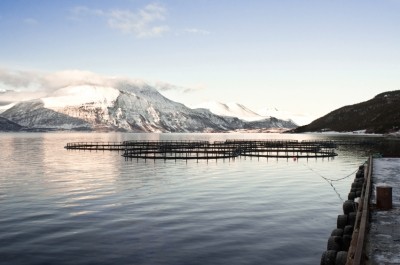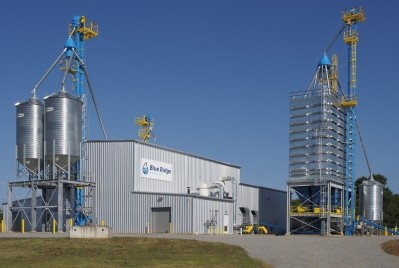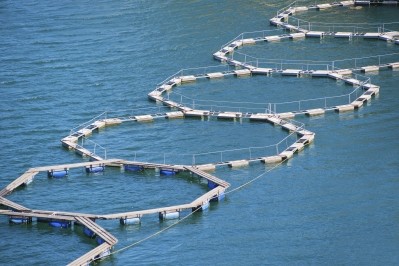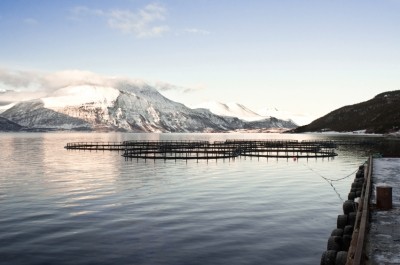Aquaculture grows in importance as demand for fish increases
are going to have to turn to commercial aquaculture farms for their
supplies, according to a Food and Agriculture Organisation (FAO)
report.
A levelling off of the amount of fish caught in the wild, coupled with a growing world population and increasing per capita demand for fish, means a shortfall in supply, the FAO stated. The shortfall will have to be made up by supplies of farmed fish. However, aquaculture might not be able to deliver the goods.
Nearly half the fish currently consumed as food worldwide are raised on fish farms rather than caught in the wild, the FAO stated in the report. Aquaculture now provides 43 per cent of the fish consumed by humans, compared to just nine per cent in 1980. Commercial aquaculture companies now provide
About 45.5m tonnes of farmed fish, worth $63 billion, is eaten worldwide each year. Meanwhile levels of captures of fish in the wild have remained roughly stable since the mid-1980s, hovering at around 90 to 93 million tonnes annually. Of the wild fish caught about 60 million tonnes is destined for human consumption.
Since there is little chance of any significant increases in catches beyond these levels, companies are going to have to use more farmed fish to meet any supply shortfall, the FAO says.
Globally, consumer demand for fish continues to climb, especially in affluent, developed nations, which in 2004 imported 33 million tonnes of fish worth about $61 billion.
The FAO's report estimates that an additional 40 million tonnes of aquatic food will be required by 2030 -- just to maintain current levels of consumption.
The FAO also found that the wild fish stocks are in poor condition to meet any further increase in demand. Of the nearly 600 wild fish species the UN organisation monititors, 52 per cent are considered fully exploited while 25 percent are either overexploited, depleted or recovering from depletion.
Twenty per cent of the species are moderately exploited, with just three percent ranked as underexploited.
"Catches in the wild are still high, but they have levelled off, probably for good," stated Rohana Subasinghe of the FAO's fisheries department.
The only option for meeting future demand for fish, Subasinghe argues, is by farming them. However, she finds that the aquaculture sector might not be able to expand sufficiently to meet that demand.
"Aquaculture could cover the gap between supply and demand, but there are also many forces which could pull production in the opposite direction, making it difficult for the industry to grow substantially enough to meet demand in the decades to come," she stated.
Aquaculture has been experiencing a boom since the mid-1980s, sustaining a growth rate of around eight per year, according to the FAO figures. Today it continues to expand in almost all world regions, with the exception of sub-Saharan Africa.
The FAO is concerned that momentum could taper off if governments and development agencies don't adjust their policies to respond to emerging challenges that threaten to damper the sector's future growth.
One serious bottleneck, says FAO, is the lack of investment capital for producers in the developing world. Another is a shortage of land and freshwater for use in aquaculture. Rising energy costs also pose a problem, and environmental impacts and questions of product safety continue to require attention.
The agency's report also points to doubts regarding future supplies of fishmeal and oil, used to feed carnivorous cultured species, such as salmon, grouper and sea bream.
Increased demand could also squeeze supplies of fishmeal and fish oil used for livestock feed. The bulk of fishmeal is used for livestock feed, chiefly by the poultry sector. Aquaculture now accounts for 35 percent of the world's fishmeal supply.
"So as aquaculture's fishmeal needs grow, competition with terrestrial livestock for a limited resource will intensify, with ramifications for both price and availability," the FAO stated. "Key to resolving the dilemma will be continued progress in improving the efficiency of feed formulations -- reducing the amount of fishmeal they contain -- and coming up with adequate vegetable-based additives."
The report calls for global and national policies to be put in place to cater for the growing appetite for fish.
"Markets, trade and consumption preferences strongly influence the growth of the sector, with clear demands for production of safe and quality products," the report stated. "As a consequence, increasing emphasis is placed on enhanced enforcement of regulation and better governance of the sector."








